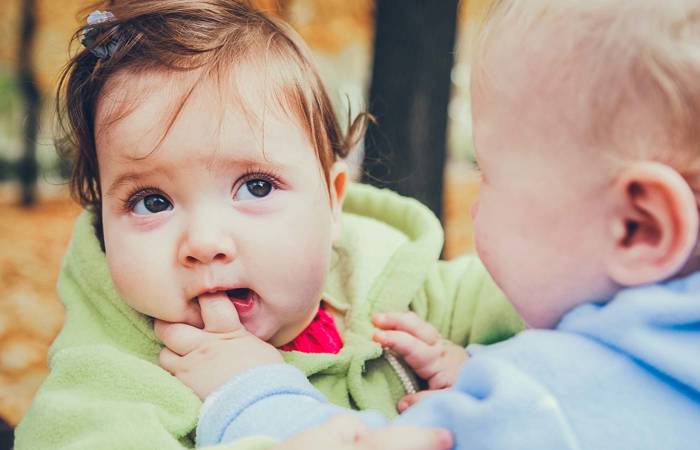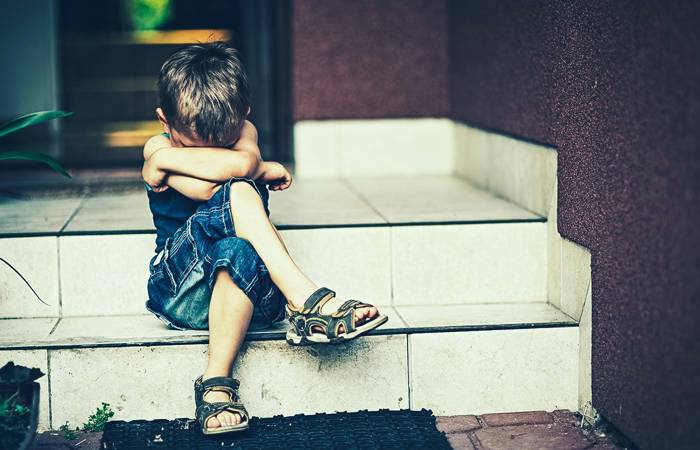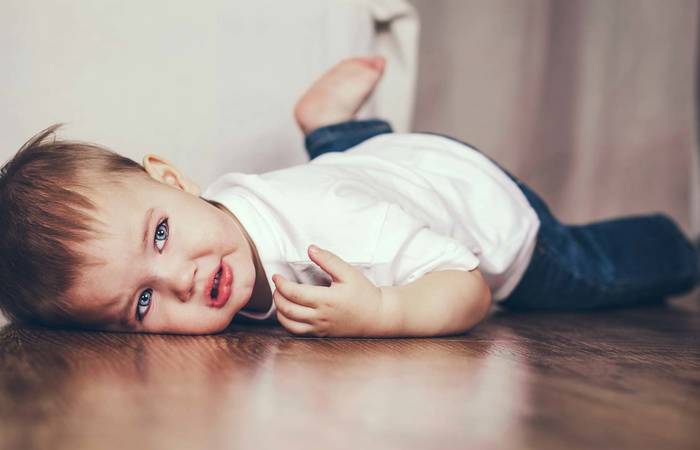Like what you see?
Sign up to receive more free parenting advice.
Thank you for subscribing to our newsletter!
Child Development

Credit: iStock.com/dusanpetkovic
Many of us have experienced or can empathise with how worrisome it is to have a child that is biting. The truth is that for many children aged 1-3 years this is a common and often passing phase of child development.
As children develop communication and language skills, learn to regulate their emotions and engage pro-socially, biting often ceases. While it is not unusual developmentally for young children to bite, it doesn’t diminish the concern families have about this behaviour. Fortunately there are a number of ways families can support children through the biting stage. First, we must understand why children bite.
Why does biting occur?
There are many developmental factors which may cause children to bite.
Your child may be teething. Teething pain is often alleviated when pressure is applied to the gums for example when biting. As an alternative to biting to relive pain, you might comfort and play with your child to distract them from the pain in their gums or you may offer cooled teething rings. If the pain isn’t managed with these strategies, then in consultation with your child’s pharmacist or GP, you may apply teething gels or provide paracetamol/ibuprofen, particularly if the teething is causing a low-grade fever.
Young children learn through sensory exploration and use their mouth to explore their world. The act of biting down and letting go in this stage supports oral muscle development and connects to an important repetitive play behaviour.
I am sure you have seen this same play behaviour in action, when your child repeatedly and intentionally drop’s food from their highchair, practising holding on and letting go, delighting in watching the food as it falls to the ground, as you look on in dismay at the prospect at having to clean the resulting mess. Provide for your child’s exploratory learning by giving them safe and appropriately sized sensory toys they can mouth, post, throw, spin, stack and connect.
Children may bite to communicate a challenge. Young children are still learning how to understand, express and manage their feelings. Biting is a physical way to show emotions. Children may bite to communicate feelings of frustration or anxiety, hunger, or tiredness, the need for connection, or to show that they are over or under stimulated. Connect with your child to help them to calm, support them to manage their feelings, thinking and behaviours before providing for their need, i.e. sleep, food, play support, social support etc.
What to do when your child bites
Immediately in response to biting, or in anticipating of biting intervene and provide support by;
- Getting down to your child’s level, and if culturally appropriate, offer connecting eye contact.
- Respond calmly with an empathetic tone of voice, facial expression and body language by saying “I can see you’re feeling [insert emotion]. I’m here to help you”. Provide your child comfort and support them to calm and resolve the need that triggered the behaviour.
- Provide comfort and support to the child that was bitten. Acknowledge and validate their feelings e.g. “I can see you’re feeling really sad/scared. That must have been sore. I’m here for you.”
- Role model the appropriate resolution strategies as you support both children.
- Additionally if your child is over 3, when they have returned to a calm and regulated state you can have a conversation at an age-appropriate level, where you talk through the incident, the triggers and the strategies they can use instead of biting. For example, “You wanted your sister’s ball. It’s hard to wait. Next time you want the ball you can ask her by saying, “can I have a turn?”. Or, you can ask me for help.”
Young children learn through sensory exploration and use their mouth to explore their world.Ann Cahill
Stay up to date with the latest news and articles from First Five Years
Thank you for subscribing to our newsletter!
How to reduce biting behaviours
There are also a few strategies you can apply proactively that support learning and skill development that over time will reduce biting behaviours.
Support communication and language development so your child can learn the words to express their thoughts and feelings, rather than expressing themselves through biting. You can do this by playing with your child and making time for meaningful ‘serve and return style’ conversations, follow their interests and draw their attention to interesting things (joint attention), listen to their verbal and nonverbal cues and respond by recapping what they say and adding one or two words.
Support emotional regulation skills by naming what your child may be feeling throughout the day and what they can do to feel better, such as “I can see you felt frustrated, I can help you to…”. This helps children, over time, to understand their feelings and needs and learn alternatives to biting.
Focus on the behaviour you want to encourage by finding opportunities to meaningfully acknowledge your child’s positive behaviours as they occur. This goes beyond phrases such as ‘good girl/boy’ to name the specific behaviour you noticed, “Thank you for coming to me when you felt frustrated”, or ”I noticed when you wanted to bite you used your teething ring - you made a great choice". Meaningfully acknowledging children’s positive behaviours builds your child’s self-concept and self-esteem and increases the likelihood they will repeat these positive behaviours in the future.
Support children to have positive social experiences by teaching social skills such as sharing and taking turns. Playfully demonstrate giving and taking between yourself and your child. Practise asking for something and waiting for your turn, narrate the turn taking process as you play by saying, ”Your turn, Mum’s turn.” This will support them to use the same approach as they begin to play with peers and therefore limit biting that stems from social challenges. You might also like to read books about biting and talk about how the characters might be feeling when they bite and when they are bitten.
If your child attends an early learning service it is a good idea to connect with your child’s educators to ensure consistency in the responses and support your child is offered if they bite at the service.
What to do when a child over three continues to bite?
The above strategies are effective for all children, including those over age three. All children are unique and develop at different rates due to the interrelationship of environmental and biological factors. Sometimes, when older children continue to bite it may be an indication of the need for additional support.
You might like to review childhood milestones to ascertain if there are any developmental domains your child requires additional support with and consider consulting your child’s Early Learning Service, Paediatrician or GP. Rest assured that with time and the right support children will find alternatives to biting.

Ann Cahill
Teaching and Learning Lead - Teaching, Learning and Safety, Goodstart Early Learning
See more






